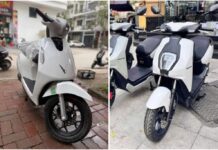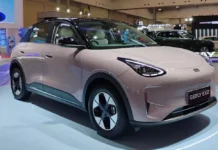The Honda Civic has become one of the most successful car models in the world. It continues to hold the title as the best-selling car in the US market, with over 377,000 units sold in 2017 alone. As we enter 2018, the Honda Civic shows no signs of slowing down. Over the course of nearly 50 years, the Civic has gone through 10 generations of innovation and improvement to meet the ever-growing demands of its customers.
Let’s take a closer look at the magnificent transformation of the Honda Civic through its 10 generations:
1. First generation: 1972-1979
The first-generation Honda Civic marked the beginning of Honda’s success in the US market. It was available in two versions: a three-door hatchback and a sedan. In the 1970s, the Civic had a starting price of $1,415 and featured 12-inch “tiny” wheels, radial tires, air conditioning, a two-speed automatic transmission, and rear wipers as optional.
2. Second generation: 1979-1983
The second-generation Civic achieved even more success than its predecessor. It had a 2-inch longer wheelbase and came with two engine options: 1.3 and 1.5 liters. The second-generation Civic was available in various body styles, including a three-door hatchback, a four-door sedan, a five-door hatchback, and a five-door wagon.
3. Third generation: 1983-1987
In the mid-1980s, the Honda Civic became the flagship model of the Japanese automaker. The hatchback and five-door wagon variants were transformed into a four-door wagon (wagovan), and the wheelbase was increased by 5 inches compared to the previous generation. All versions of the third-generation Civic were equipped with a 1.5L 4-cylinder engine, and an Si variant was also introduced.
4. Fourth generation: 1987-1991
The fourth-generation Civic underwent a complete redesign in 1987. It was available in four different variants: CRX, HF, DX, and Si. The engine of the fourth-generation Civic featured electronic fuel injection and was assembled at Honda’s factory in East Liberty, Ohio, USA.
5. Fifth generation: 1992-1995
The fifth-generation Civic made its debut from 1992 to 1995, and it underwent significant updates. It had a more muscular body compared to its predecessor and achieved an impressive fuel consumption of 4.9L/100km in the city and 4.2L/100km combined. This generation solidified the Honda Civic’s reputation in the tuning community.
6. Sixth generation: 1996-2000
The sixth-generation Civic retained the beautiful design and high aerodynamic characteristics of its predecessor but came with new headlights and taillights. It was available in six different variants: CX, DX, EX, EXR, HX, and LX.
7. Seventh generation: 2001-2005
The seventh-generation Civic was introduced in September 2000. It retained the same size as the previous version but had a more spacious cabin, allowing it to compete in the compact car segment. The Honda Civic was offered in four versions: DX, LX, EX, and HX.
8. Eighth generation: 2006-2011
Just five years after the seventh-generation Civic, Honda rolled out the eighth-generation Civic in the US market. It was available in sedan and coupe versions, while the hatchback variant was exclusively for European customers. By 2006, Honda had sold over 16.5 million Civic units worldwide, including more than 7.3 million in the US alone.
9. Ninth generation: 2012-2015
The ninth-generation Civic showcased a “dynamic, sleek, and aerodynamic” appearance. It was launched in the US in April 2011 with coupe and sedan versions. The ninth-generation Civic was the first to be equipped with Honda’s Eco Assist technology.
10. Tenth generation: 2016-present
After 45 years, the Honda Civic continues to be a symbol of Honda’s excellence in the global car market. The tenth-generation Civic was introduced in 2015, featuring Honda’s new “Compact Global Platform.” It is available in sedan, coupe, and hatchback configurations. The high-performance Type R variant of the Honda Civic also made its debut in the US market.
By Dinh Giang (Forum.autodaily.vn)
Images: budgetdirect.com.au (https://goo.gl/GE59ds)









































![[USER REVIEW] Honda Civic RS: Stylish, Premium, and Alluring](https://vnauto.net/wp-content/uploads/2023/10/xehay-hondacivicrs-08042023-2-150x150.jpg)















